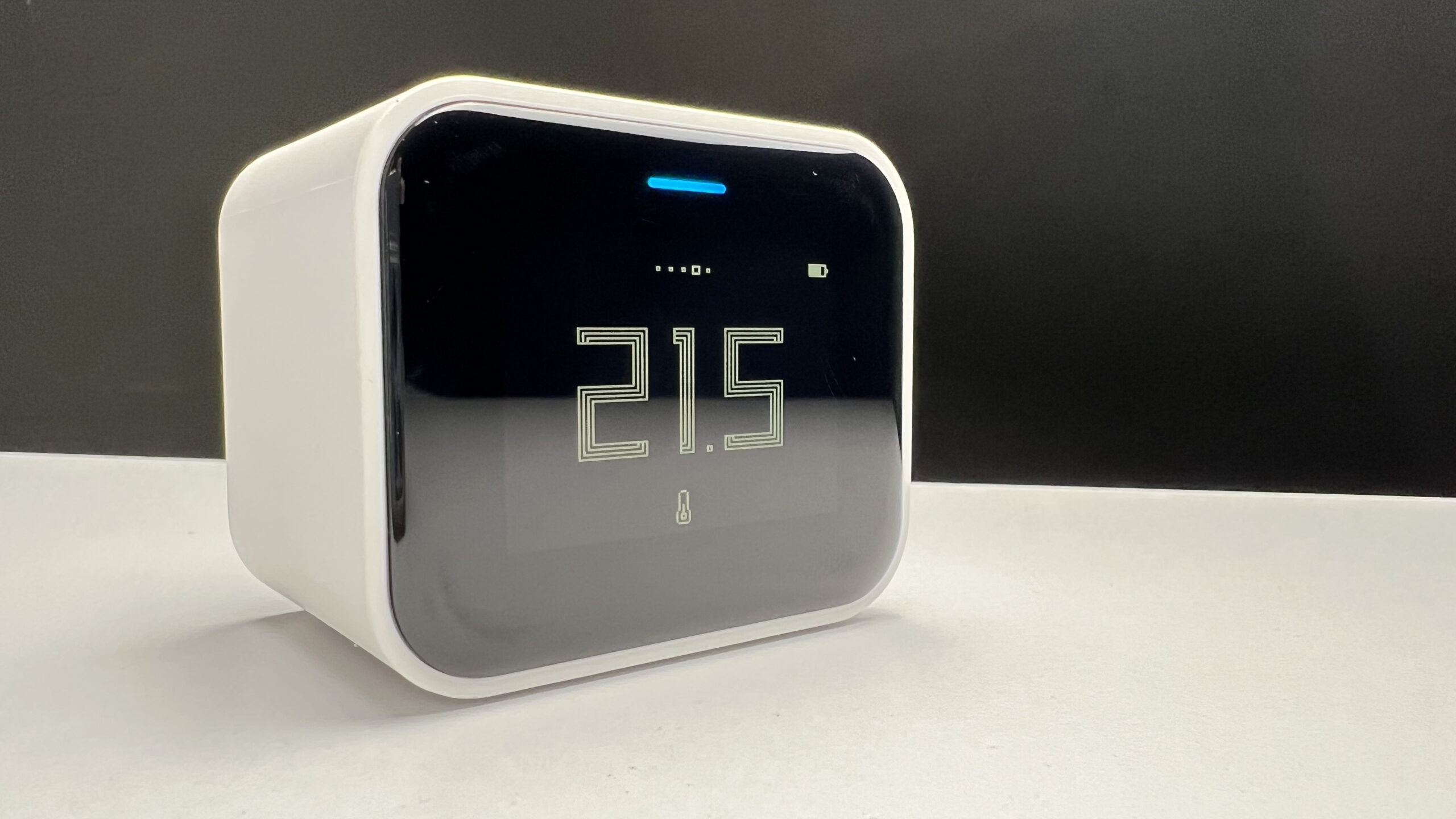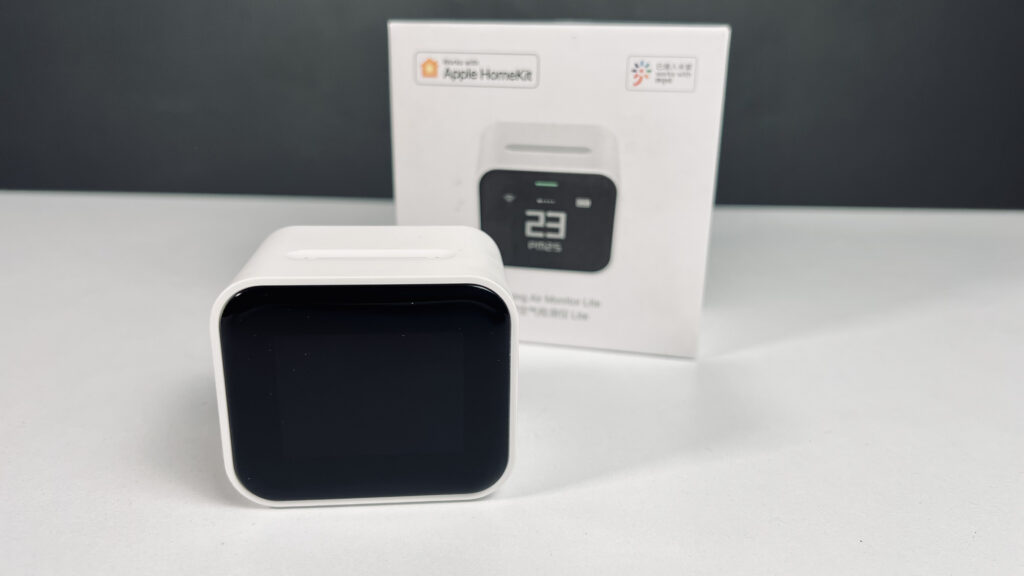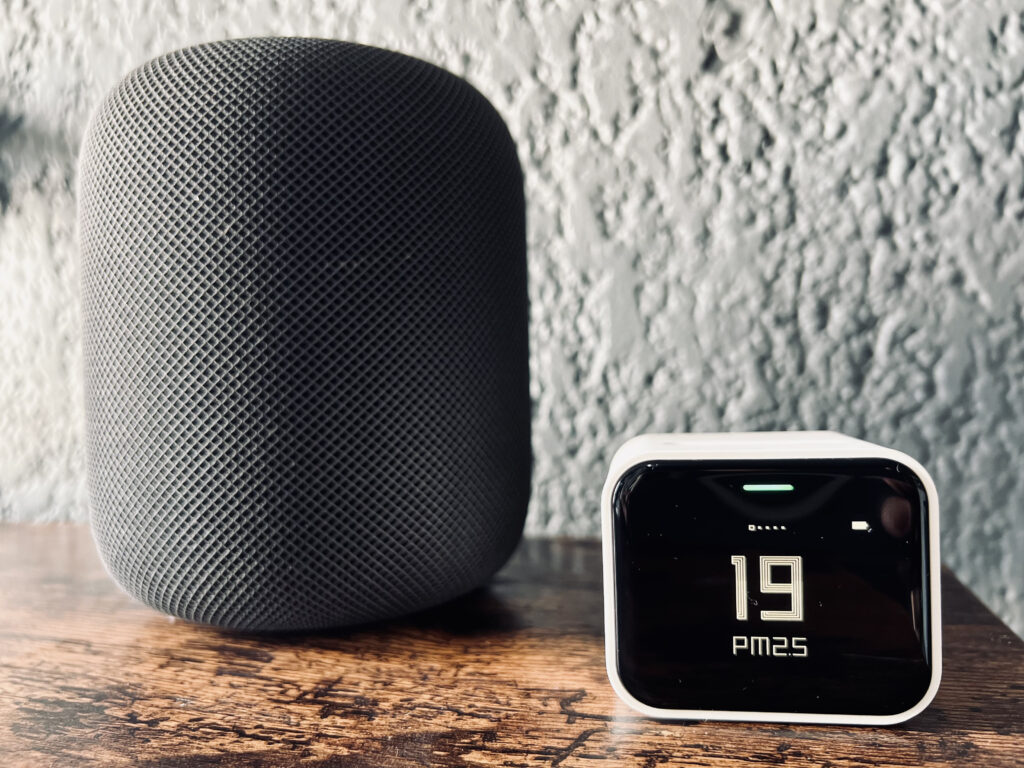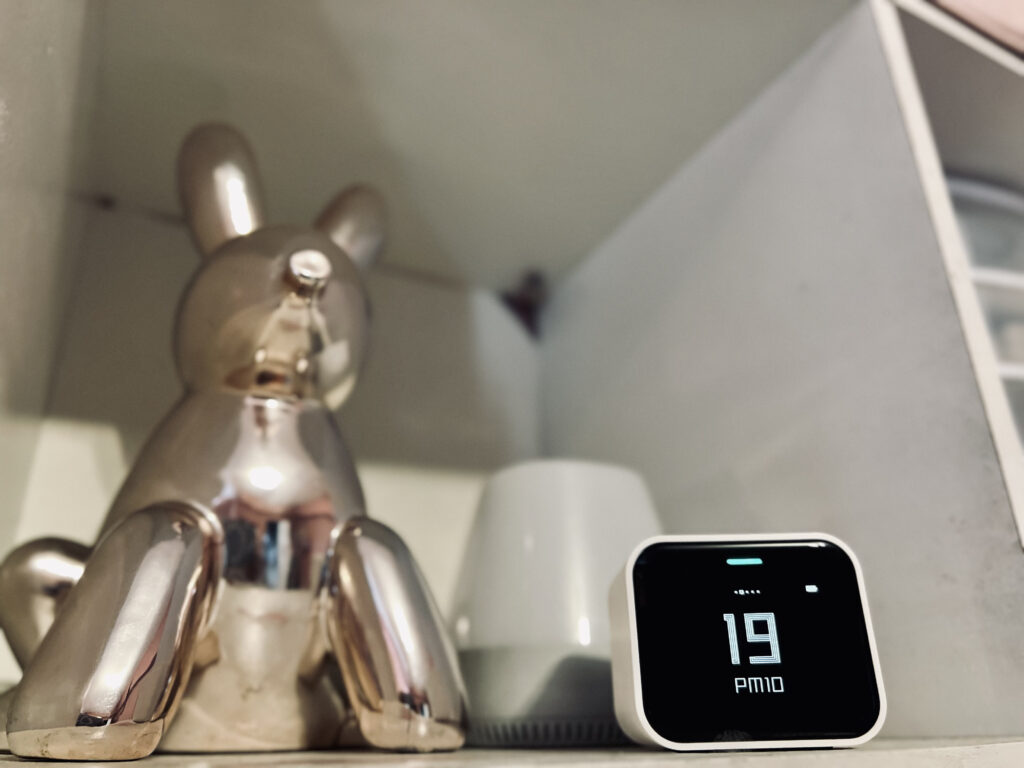Not only can HomeKit air quality sensors help you make sure your family is breathing the highest quality air possible, you can also show off to neighbor Bob with all your nifty air conditioner, fan, humidifier, and purifier automations. I have been fortunate to have reviewed a handful of HomeKit indoor air quality sensors for myHomeKithome, but The Air Monitor Lite from QingPing really is a cut above.
Features
- temperature, humidity, PM 2.5, PM 10, & CO2 sensor
- OLED display with 5 screen options
- LED air quality indicator
- Built-in Rechargeable battery
Need to Knows
- Bluetooth pairing / 2.4 gHz WiFi connectivity
- USB-C charging
- Power supply not included
Pros
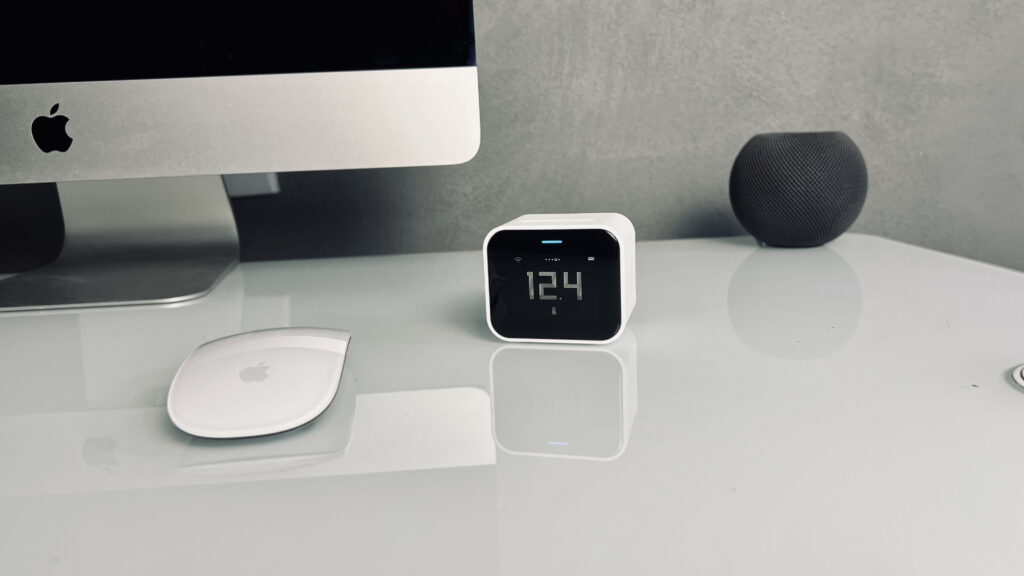
There is A LOT to really like about this indoor air quality sensor. First of which is the shear amount of data that it provides and the variety of ways in which you can see that data. It has PM 2.5, PM 10, CO2, temperature, and humidity sensors giving you just about all the information you could want to know about your indoor air quality. Being a smart sensor, we can of course retrieve this data through the app, but an obvious stand-out of this device is just how much information you can see right from the device itself on the ultra-sharp OLED display.
You can cycle through the 5 different displays showing details of the different sensor readings using the touch-sensitive bar located on the top of the cube. There’s also the color-changing LED indicator that reflects the levels of whichever sensor data is displayed on the LCD. color to
I am all about that wire-free lifestyle and thankfully the Air Monitor Lite is not only battery powered, but has a built-in rechargeable battery. In my experience, air quality sensors tend to be pretty power hungry, as do WiFi devices, so it is a tad surprising that they went with a battery option, but regardless I am glad it’s here.
Cons
Let’s stay on the subject of battery. It lasts for a relatively short amount of time at a little more than 6 hours in my testing. So, while it is convenient to be able to take it to a separate space for a bit to check in on the air quality, it won’t be there for long without needing to be connected to a power source. The Air Monitor Lite, as is the case with every other air quality sensor I’ve tested, takes a little while to get used to its surroundings giving you an even smaller timeframe in which to check the air quality, make any necessary adjustments, and then check it again. You might be better off just plugging it in from the get-go.
Speaking of plugging it in, you’ll have to source your own USB-A power brick as one is not included in the box. I can understand the rationale behind not including one as part of a new iPhone’s accessories, but definitely not with a device that needs such regular charging. I also find it slightly odd that USB-C is a hyped feature, yet you’ll still need to dust off an old A-style brick to give it some juice.
The Air Monitor Lite also lacks a TVOC sensor which one might expect from such a multipurpose air sensor. While it does a bang-up job of sensing smaller and larger air particulates with its PM2.5 and Pm10 sensors, the inclusion of a TVOC reader would have put this sensor over the top. The CO2 sensor is a unique choice, but a TVOC sensor would have been applicable in more situations I think.
The Apps

I’m a sucker for simple designs and the QingPing+ app is that, yet packed with just the right amount of data and control.
The first thing you’ll notice is that you can either create an account or skip that step altogether which I really appreciate and definite did. Once you’ve gotten your device setup with a nearly stock HomeKit accessory setup process, if you didn’t already add it in Apple’s Home app, you notice that you get a quick readout of the sensor’s levels. You also get some quick recommendations on ways to improve the air quality based on the levels which is not something I’ve seen in other apps. I quite like this, but if you don’t you can toggle recommendations off through the ‘Settings’ tab.
As you might expect, tapping on the device you get a ton of historical data from 24-hour, 7-day, and 1-month periods. This can be really useful for analyzing if steps you are taking to improve your air quality are having an impact or maybe there are some areas in your indoor environment that need some extra care.
Also notable in the app is the ability to adjust how sensor data is displayed on the device. You can change the temperature and air quality units to your liking.
In Apple’s Home app, all 5 sensors are exposed and fall under the climate category with the exception of the CO2 sensor. Each of the accessory tiles also display their current measurements, again with the exception of the CO2 sensor which requires you tap on the tile in order to get its reading in PPM.
As this is a rechargeable device, we can see not only the battery level, but also its charging status. Though not in Apple’s Home app, we can use this battery level as a trigger for automations in apps that take advantage of this characteristic in HomeKit.
The last exceptional note of the CO2 sensor is that we can opt in for notifications that will notify us if an abnormal level of CO2 has been detected. This is unique for an environment sensor in HomeKit. So unique in fact, that I assumed it was actually a iOS critical notification like smoke, CO, or water leaks, but alas it is a standard push notification like those received for motion or contact sensor events.
Accessibility
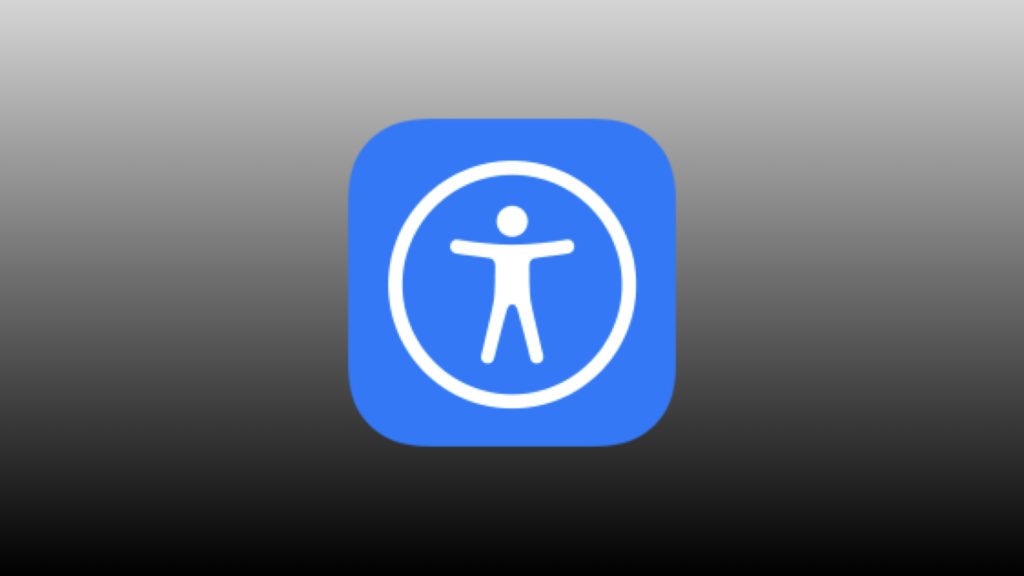
I was very pleasantly surprised to find that the QingPing+ app was incredibly well designed for accessibility with its navigability being intuitive and its semantic structure being properly tagged. All buttons were also labeled and even the data records were easily understood using VoiceOver.
This is a shining example of how incorporating accessibility features does not have to affect an app’s overall design. Especially for smaller vendors, this is not something I usually expect, so I really have to commend QingPing here.
Final Thoughts
So, who should add the Air Monitor Lite to their Apple Home? Honestly, everybody. Indoor air quality is super important and though it does not include a TVOC sensor, it is a very solid way of keep tabs on what you and your family are breathing. The inclusion of a CO2 sensor is a nice touch and I’m only aware of one other sensor that has this. Take your indoor environment seriously. It’s where you and your loved ones sleep, eat, and live and it should be as clean as you can possibly make it and the QingPing Air Monitor Lite can help you make sure of this.
We use income-earning affiliate links.
We may receive a small commission on purchases made using links on this page at no extra cost to you.
